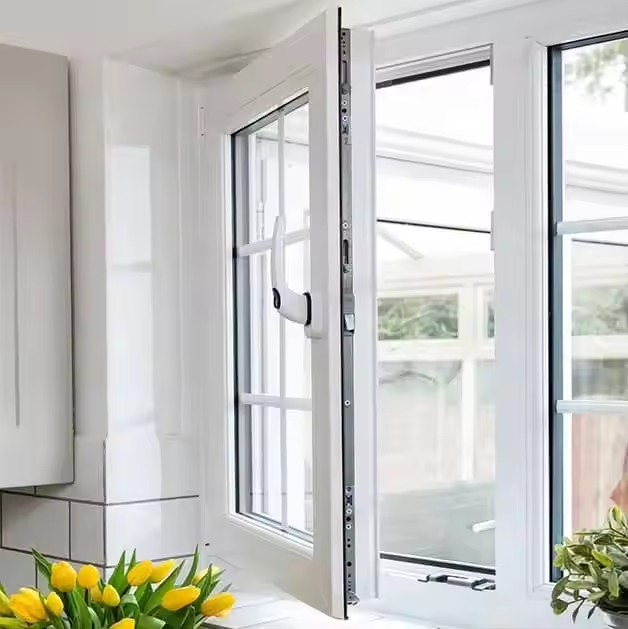Hot Climate Zones
Door and Window Requirements:
These areas experience high temperatures year-round. Therefore, doors and windows need excellent thermal insulation and ventilation to block external heat, promote indoor air circulation, lower indoor temperatures, and reduce reliance on air conditioning.
Recommended Types and Materials:
Aluminum Alloy Doors and Windows: Widely used in the Australian market due to their lightweight, aesthetic appeal, and durability. Models made from thermally broken aluminum (also known as “broken bridge” aluminum) are preferable. The thermal break design interrupts heat conduction between interior and exterior frames, greatly enhancing insulation compared to conventional aluminum windows. Pairing them with Low-E or tinted glass can further reduce solar heat gain.

PVC Doors and Windows: Offer good insulation at a moderate price. The plastic frames have low thermal conductivity, and excellent airtightness and water resistance, effectively keeping hot and humid air out.
Louvered or Casement Windows: Both provide large openings to promote natural ventilation. Louvers, in particular, allow adjustable airflow and light control through blade angle adjustments, offering shading while maintaining ventilation.
Mixed Climate Zones
Door and Window Requirements:
These regions experience significant seasonal temperature differences. Doors and windows must balance thermal insulation in summer and heat retention in winter.
Recommended Types and Materials:
Double or Triple Glazed Windows: Whether using aluminum, thermally broken aluminum, or PVC frames, combining them with multi-glazed units significantly enhances both insulation and heat retention. The air or inert gas between glass layers reduces heat transfer and lowers the window’s U-value.
Windows with Adjustable Shading: These include windows with operable louvers, blinds, or integrated shading systems. In summer, shading devices block direct sunlight, minimizing solar heat gain. In winter, they can be retracted to allow sunlight in, naturally warming the indoor space.
Thermally Broken Aluminum Windows: Besides excellent thermal insulation from the thermal break, the choice of glass can be tailored to orientation. South-facing windows may use glass with a high Solar Heat Gain Coefficient (SHGC) to capture more winter sunlight, while east- or west-facing windows benefit from low SHGC glass to reduce summer heat gain.
Cold Climate Zones
Door and Window Requirements:
These areas have low temperatures and require windows with superior insulation and sealing to prevent indoor heat loss and withstand harsh weather like wind and snow.
Recommended Types and Materials:
Solid Wood Doors and Windows: Known for their aesthetic appeal and eco-friendliness, they offer natural insulation. Wood has low thermal conductivity, effectively reducing heat loss. However, they are more expensive and require regular maintenance to prevent warping or decay.
High-Performance Aluminum Alloy Windows: Made with thermally broken aluminum and paired with double or triple-glazed Low-E glass. Low-E glass has a very low emissivity, reflecting indoor heat back inside while still allowing visible light in, ensuring both warmth and natural light.
Inward-Opening Casement or Tilt-and-Turn Windows: These designs offer excellent sealing to block cold air infiltration. Good sealing improves comfort by minimizing heat loss. Inward opening also makes them easier to clean and maintain from inside.

Additional Performance Considerations for Australian Doors and Windows
Safety: Due to the high bushfire risk in Australia, windows often use fire-resistant glass or coatings and secure locks with reinforced frames to improve fire and burglary protection.
Sound Insulation: In urban or traffic-heavy areas, soundproofing is crucial. Double/triple glazing, integrated blinds within insulated glass units, and well-sealed frames can effectively reduce outside noise.
Wind Resistance: Coastal or windy regions require windows with strong wind pressure resistance. Reinforced structural design, high-strength hardware, and quality sealing strips enhance wind resistance and ensure stability during storms.

